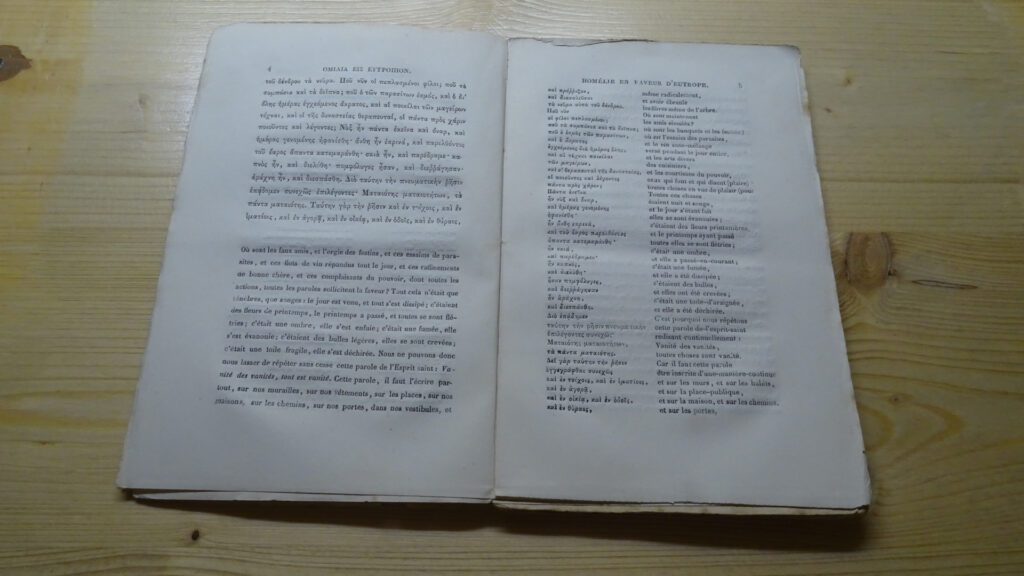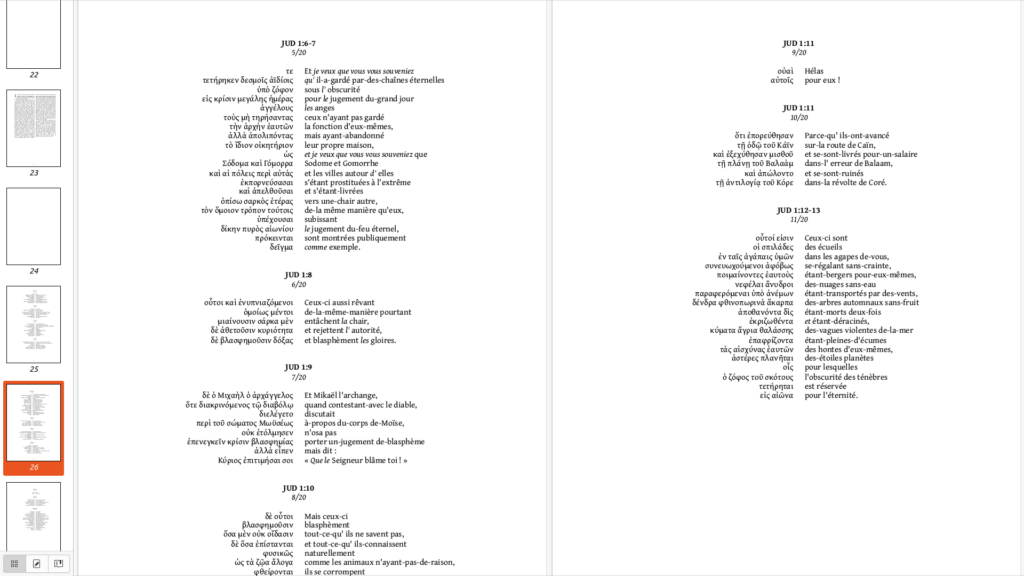
What is a juxtalinear?
Juxtalinear translations were a 19th-20th century phenomenon in the French education
system. French grammar was taught via Latin and Greek texts. The publisher Hachette
produced around 500 booklets to help school pupils engage with those texts. They contained
the source language text and a fluid translation, but also a bilingual view. On the left, the
source language was rearranged to approach natural French word order, and broken up into
small, grammatically-meaningful chunks. On the right, there was a hyper-literal gloss, in
French, of each chunk. Publication stopped in the early 20th century and, today, few people
know about them, even among francophone linguists and classicists. (Andy Warren-Rothlin is
one impressive exception to this rule.)
What’s special about a juxtalinear?
Juxtalinears provide a bridge between source and target languages, in a way that is easy to
explain to non-linguists, that limits the risks of misinterpretation, and which leaves open most
contended options in interpretation.
Compared to a literal translation (NASB, Darby…) a juxtalinear is much closer to the source
language. This is possible because the juxtalinear gloss is not intended to be read devotionally
or from the pulpit. The gloss does not need to be elegant, it just needs to convey the sense of
the words in each chunk. For example, Greek participles, which may be translated as verbs,
nouns, adjectives or adverbs in a literal translation are systematically translated as participles
in French and English. The translator using a juxtalinear may then decide how best to render
each participle in their language.
Compared to an interlinear, a juxtalinear provides more grammatical context. Interlinears can
be convenient tools for those with some grasp of source language grammar but, in the hands of
someone with no understanding of Greek or Hebrew, they can encourage mix ‘n’ match
misassembly of words to produce incorrect meanings. A juxtalinear regroups words that belong
together grammatically, and the glosses are for those chunks rather than for individual words.
Compared to a syntax tree, a juxtalinear is more accessible and makes less interpretive calls.
Syntax trees contain a huge amount of information, but it is hard to present that information
to end users without overwhelming them. Also, a syntax tree, by its very nature, resolves every
pronoun reference and other grammatical ambiguity in the source text. Juxtalinears were
designed to be comprehensible by school children, and there are very few contended choices to
be made at the “chunk” level of a juxtalinear.
How do we make juxtalinears?

Xenizo has been working on juxtalinears for 18 months, and has gradually developed software
to support this. We currently have an online editor and a juxtalinear mode in the Scribe editor.
We start with an open-access Greek text such as the unfoldingWord Greek New Testament
(UGNT). The software generates a sentence-by-sentence view of this, after which the user may
reorder and chunk the sentence as well as adding a gloss. Today we have human-generated
juxtalinears for just over a quarter of the NT (by Greek word) and have begun experimenting
with Hebrew.
We have also experimented with machine translation of those juxtalinears. The technology
produces English juxtalinears from Greek-French sources equivalent to human final drafts. We
are awaiting feedback on machine translation to Farsi. The evidence so far suggests that we
could produce juxtalinears for many Western languages, at least, for little more effort in total
than that required to produce a reference translation in French.
